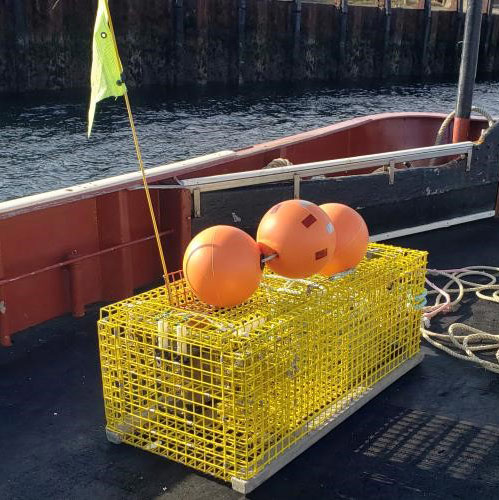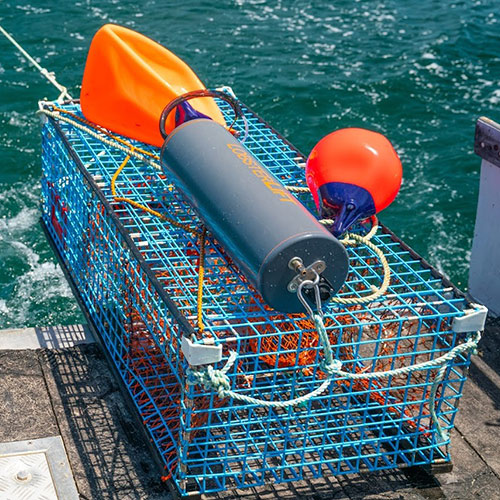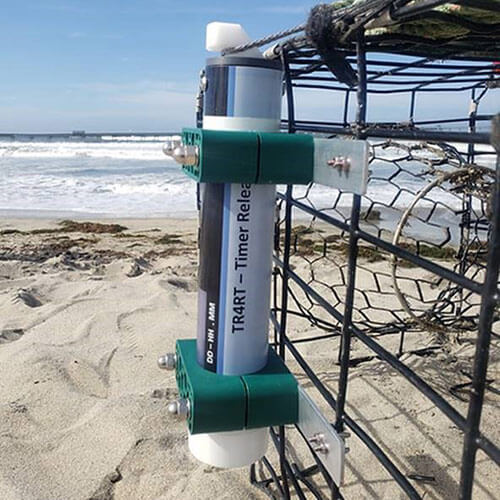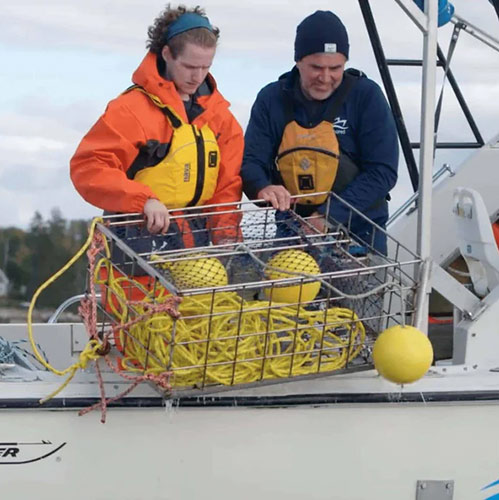The problem
More than 650,000 marine mammals are unintentionally killed or seriously injured by fishing gear every year. Of these, more than 300,000 are whales, dolphins and porpoises. Accidental entanglement in fishing ropes and buoy lines is a leading cause of death and injury of many large whale species in the United States and internationally. In some populations, almost every whale has been entangled at least once. Entanglement is an urgent conservation and animal welfare issue that must be addressed.
What happens when a whale is entangled?
- Whales may drown within minutes or experience prolonged traumatic deaths.
- Ropes and line may cut into muscle and bone, resulting in agonizing injuries and infections.
- Entanglements around the blow hole can restrict the airway, making it difficult to breathe.
- Baleen may be damaged, preventing the whale from feeding effectively and contributing to malnutrition or prolonged starvation.
- Increased energy expenditure and chronic stress can lead to long-term health effects and reduce the ability of females to successfully calve.
The critically endangered North Atlantic right whale is being driven to extinction because of accidental entanglement in fishing gear, as well as vessel strikes. Only about 340 right whales now remain, including fewer than 70 reproductive females, and the species is still rapidly declining. If the species is to survive, we cannot lose a single right whale per year from any human cause. Yet, 97 whales have been documented as killed, injured, or in poor health since 2017. More than 86 percent of surviving North Atlantic right whales bear entanglement scars, with females being particularly vulnerable. Females are less likely to have calves for several years after becoming free of an entanglement, creating a further barrier to the species’ recovery.
Fishing gear used to catch lobster and crab in the Northeast United States and Atlantic Canada is the main cause of accidental entanglements of North Atlantic right whales. Lobster and crab are mostly caught with pots and traps on the seafloor that are attached via long vertical lines to marker buoys at the surface. The surface buoys help fishers locate their pots or traps and communicate to others where they are fishing. The buoys also aid necessary fishery management and enforcement activity.
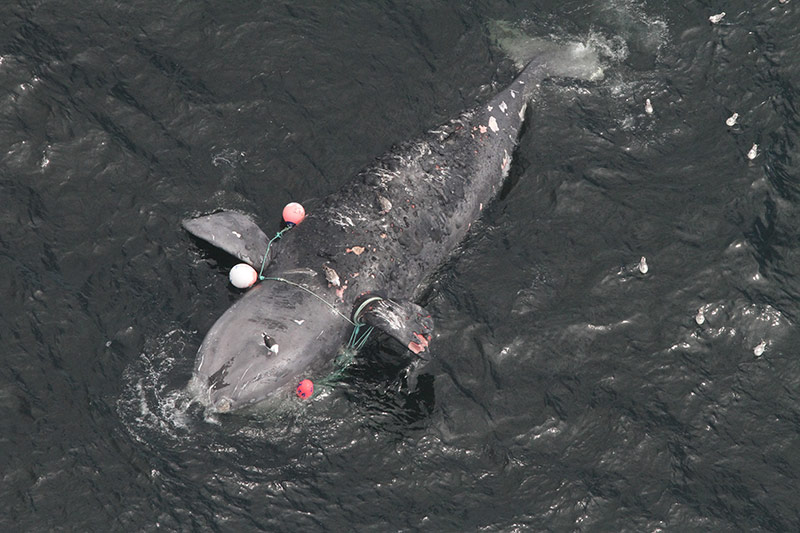
It is estimated that these fisheries use more than a million vertical buoy lines in areas important to feeding and migrating right whales. Climate change has caused right whales to shift their distribution northward and further offshore as they track prey into cooler waters. These shifts have increased the number and severity of interactions between right whales and lobster and crab fisheries in waters off southern New England, the Gulf of Maine, Nova Scotia, and the Gulf of St. Lawrence.
Interactions between fishing gear and right whales also negatively affect fishing communities and the broader industry—resulting in loss of gear, delays in seasonal openings, closures to reduce conflict with whales, and other impediments.
A solution that puts an end to entanglements of North Atlantic right whales and helps the species coexist with economically important fisheries is urgently needed.
